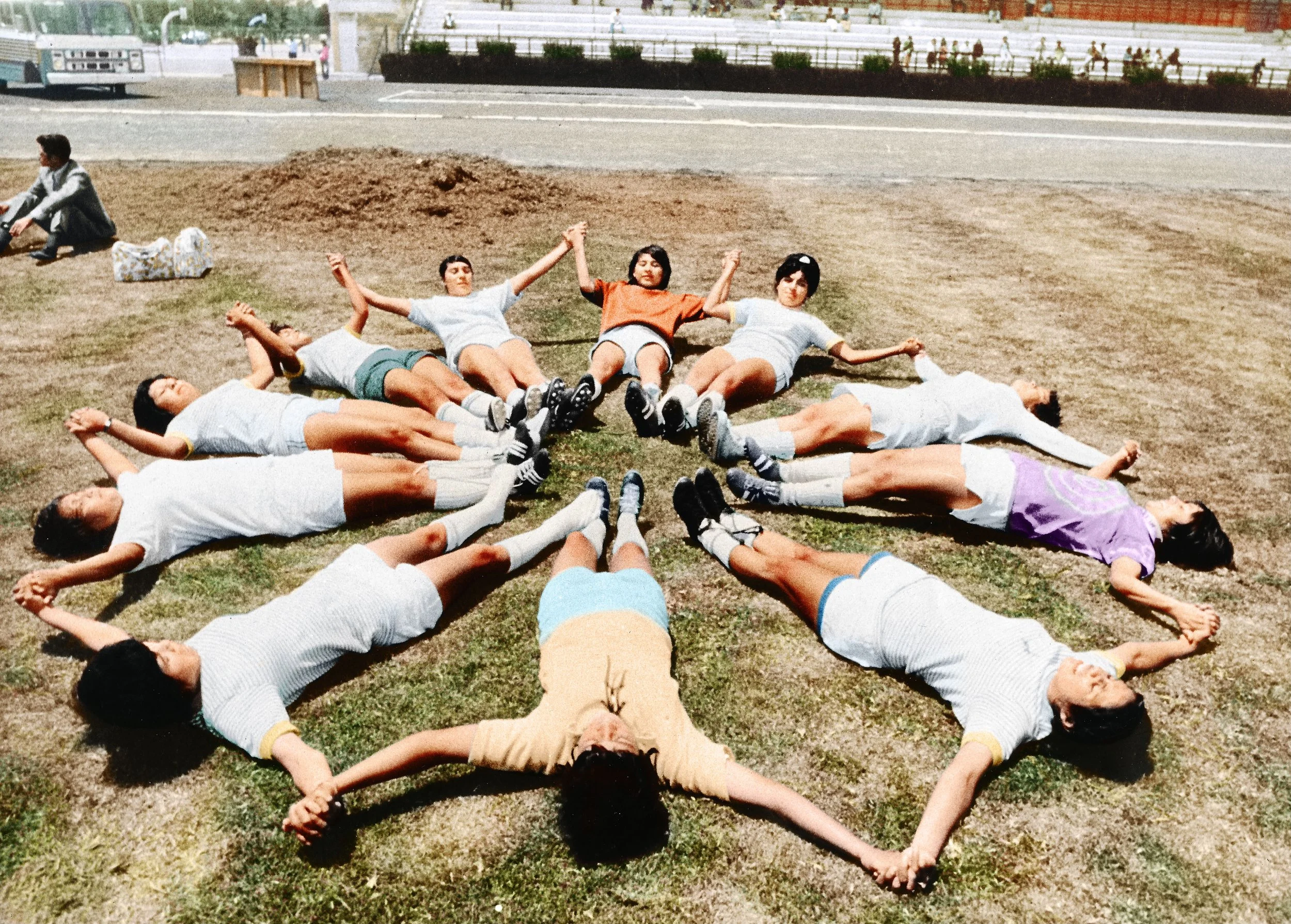Copa 71 (2024) | Dir. Rachel Ramsey
French International Team © New Black Films / Mirrorpix. Color Artist Marina Amaral
Written by: Belle McIntyre
In August 1971 in Mexico City, fifty years after FIFA banned women’s soccer, the largest Women’s World Cup championship is presented in the Azetca Stadium. This extraordinary world class sporting event for women’s soccer was the #1 record holder for attendance at any women’s sporting event. Held at the Azteca Stadium in Mexico City in 1971, with 100,000 in attendance, it was the first, though unoVicial, World Cup for women’s soccer. UnoVicial, because it was played after FIFA had banned women soccer from the usual venues. Therefore, the Azteca was chosen with its 110,000 seating capacity.
England team training camp in Mexico © New Black Films / Mirrorpix. Color Artist Marina Amaral
The fact that women’s soccer was being stiffed in many countries in subtle, and not so subtle ways by official restrictions on playing fields and negative reporting about the inappropriateness of women playing a “man’s” sport. It did nothing to blunt the enthusiasm for the sport and drew women to play. It was almost a political act of rebellion in the 1960s.
Mexican and Italian players fighting on the pitch © New Black Films / Mirrorpix. Color Artist Marina Amaral
It took a group of Italian businessmen who saw potential $$$ signs in a Women’s World Cup Mexico in 1971. Teams were invited from France, Argentina, Mexico, Italy and Denmark. They spared no expense with publicity, prominent advertising campaigns, branded products, feted with parties for the teams. In short, they were getting the full-on support which mens teams had been accustomed to. The sponsors were making big money. But it is unclear if the players were paid. A thought which hardly entered the minds of these young players who were simply overwhelmed by the attention and enthusiasm being showered upon them. They played spectacularly to wildly engaged crowds and in spite of some meddlesome interference from the male referees. They were playing for the sheer joy of playing in front of an adoring crowd.
Mexican team © New Black Films / Mirrorpix. Color Artist Marina Amaral
The monumentality of the event and its wild success should have led to the furtherance of women’s soccer. But it did not. Mysteriously it disappeared from the annals of sports history only to be found and given it’s due. (Kind of like the Tulsa Massacre). Interviews with some of the players admit how bewildering the whole experience was for them. They were so young and naïve and, dare I say it, exploited by the promoters, who had no sincere love of the sport or its significance to the players or the sport. It was only a big money opportunity. It is really maddening, but it is also uplifting to see what these scrappy young players were capable of. There is wonderful archival footage of the match and the adoring crowds. Ironically, the first official Women’s World Cup to be hosted by FIFA was not until 1991. Maybe now the genie cannot be put back in the lamp.
England team training camp in Mexico © New Black Films / Mirrorpix. Color Artist Marina Amaral












